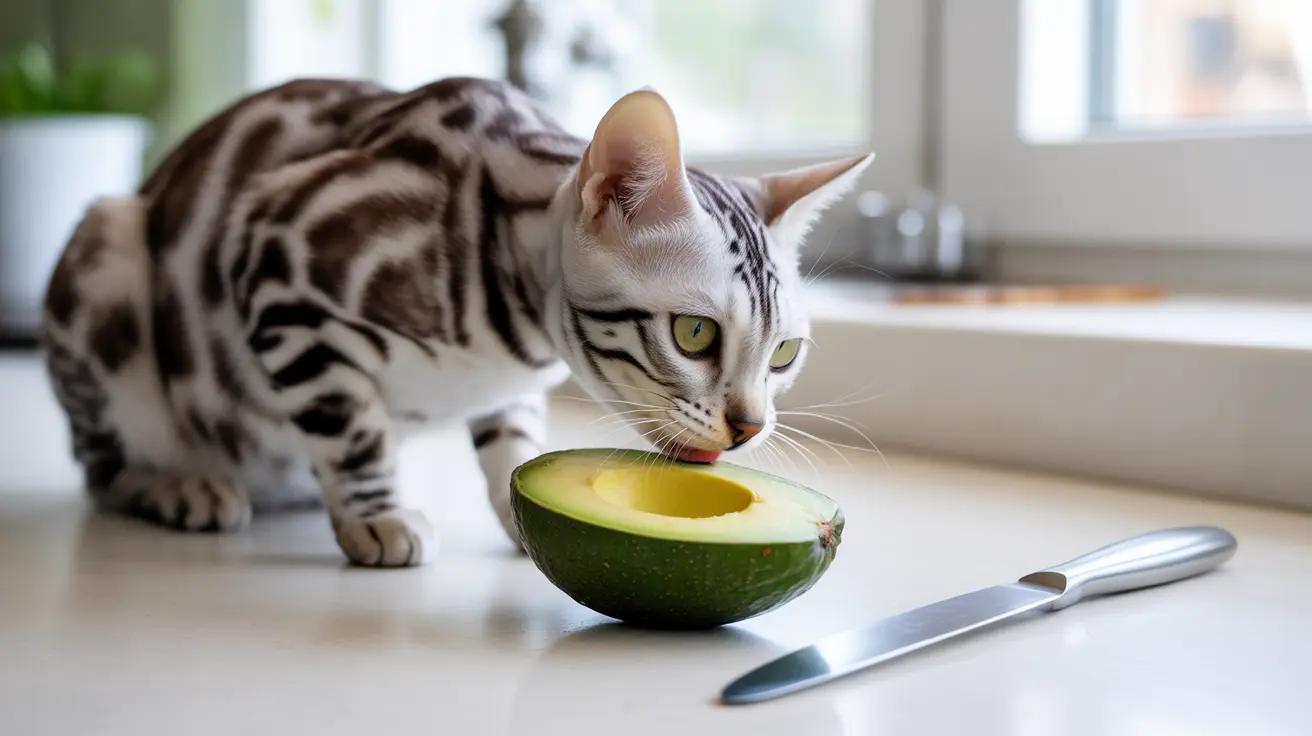Understanding Avocado's Impact on Cats
Avocados contain persin, a natural fungicidal toxin that's particularly concentrated in the pit, skin, leaves, and bark of the plant. While cats are generally less sensitive to persin than other animals, exposure can still cause health issues, especially when consuming parts other than the flesh.
The flesh contains lower levels of persin but presents other concerns, including its high fat content and potential to cause gastrointestinal upset in sensitive cats.
The Dangerous Parts of Avocado
When it comes to avocados, not all parts are created equal in terms of risk to your cat:
Highest Risk Components
- Pit (severe choking and obstruction hazard)
- Skin (high persin concentration)
- Leaves and bark (highest persin levels)
- Large amounts of flesh (can cause GI upset)
Health Risks and Warning Signs
If your cat consumes avocado, especially the dangerous parts, watch for these symptoms:
- Vomiting and diarrhea
- Abdominal pain and discomfort
- Lethargy or decreased activity
- Loss of appetite
- Potential cardiac effects in sensitive cats
Safe Consumption Guidelines
If you're considering offering avocado to your cat, follow these strict guidelines:
- Only offer small amounts of ripe flesh (maximum 1 tablespoon)
- Never feed skin, pit, or leaves
- Monitor for any adverse reactions
- Keep it as an occasional treat, not a regular part of diet
Nutritional Considerations
Despite avocado's impressive nutritional profile for humans, it offers minimal benefits for cats. Cats are obligate carnivores, meaning they require a meat-based diet to thrive. The potential risks of feeding avocado outweigh any nutritional benefits they might receive.
Emergency Response Protocol
If your cat has consumed avocado parts or shows signs of distress:
- Identify what parts were eaten
- Contact your veterinarian immediately
- Monitor your cat closely
- Save any evidence of consumption
- Follow veterinary guidance precisely
Frequently Asked Questions
Can cats safely eat small amounts of ripe avocado flesh?
While cats can technically eat tiny amounts of ripe avocado flesh, it's not recommended as a regular treat. The risks outweigh any potential benefits, and there are many safer treat options available.
What parts of an avocado are toxic or dangerous to cats?
The pit, skin, leaves, and bark contain the highest levels of persin and are the most dangerous. The pit also presents a serious choking hazard, while the skin can cause intestinal blockage.
What are the symptoms of avocado poisoning in cats?
Common symptoms include vomiting, diarrhea, abdominal pain, lethargy, and decreased appetite. In severe cases, cats may experience cardiac effects or pancreatitis.
How much avocado is too much for a cat to eat without risk?
Any amount beyond a small taste (maximum 1 tablespoon) of ripe flesh is too much. Even this small amount should only be offered occasionally, if at all.
What should I do if my cat eats avocado skin, pit, or leaves?
Contact your veterinarian immediately if your cat consumes any avocado parts besides the flesh. These components pose serious health risks and require prompt medical attention.
While small amounts of avocado flesh might not be immediately dangerous to cats, the safest approach is to avoid feeding avocado altogether. There are many cat-specific treats available that offer both enjoyment and appropriate nutrition without the associated risks.






